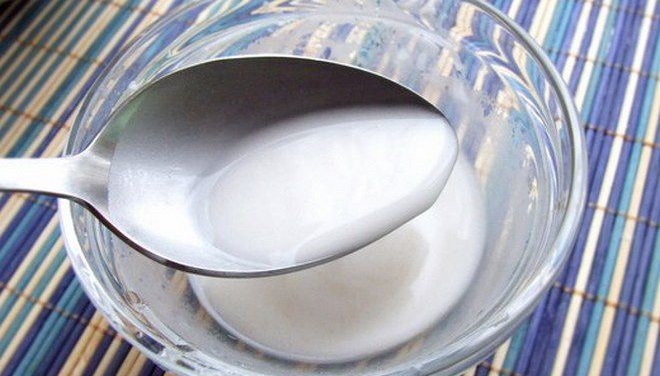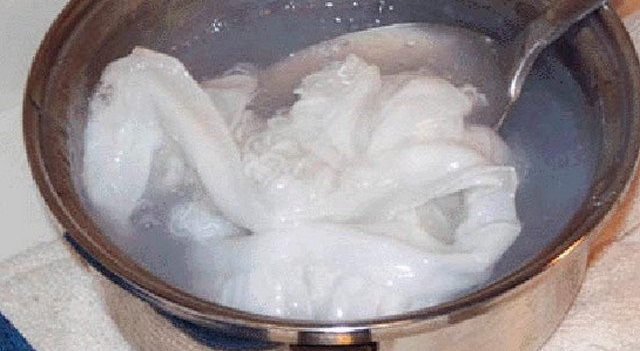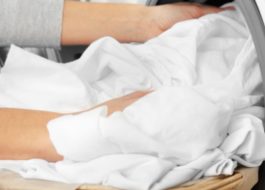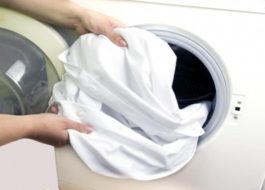How to starch a shirt in the washing machine?
 Previously, it was customary to starch clothes, because this procedure gives a particularly elegant and festive look. Housewives processed things manually, but today washing machines can also do this. We'll tell you how to properly starch a shirt in the washing machine and in other ways. What should you pay attention to so as not to spoil things?
Previously, it was customary to starch clothes, because this procedure gives a particularly elegant and festive look. Housewives processed things manually, but today washing machines can also do this. We'll tell you how to properly starch a shirt in the washing machine and in other ways. What should you pay attention to so as not to spoil things?
Starching in an automatic machine
Starching clothes using a washing machine is as easy as shelling pears. But first you need to prepare a solution. We will tell you exactly how to make it later, but for now we will focus on the features of starching in the washing machine.
- Place items (blouses, shirts, bed linen, etc.) in the washing machine.
Important! If you're running low on wardrobe items, add white sheets or pillowcases to the drum to load your washer.
- Add detergent intended for washing white laundry. Add conditioner or rinse aid if necessary.
- Set the desired washing program.
- Turn off spin completely.
- When the washing is finished, there is no need to take things out. Pour 1 cup of starch solution into the conditioner compartment and start rinsing again. This time you need to turn on the spin, but at the lowest speed.
- Take things out and hang them on hangers to dry.
Sometimes housewives complain that the starch solution does not flow well into the machine. In this case, it is allowed to pour it directly into the drum. This will help achieve the desired effect.
Starch the traditional way
You can starch things by hand. For this we need a large boiling pan, starch and water. How to starch blouses?
- Place starch in cold water. It is better to take a small amount of liquid, ½-1 glass. Stir until smooth or pass through gauze folded in several layers. If the starch has a grayish tint, let the solution sit for 10-20 minutes, then drain the water.

- Boil a liter of water in a saucepan and add the concentrate to it.
- Turn on low heat and keep the pan on it for 5 minutes, stirring the liquid constantly. The result is a starch paste. If it is too thick, add liquid until the consistency is slightly thicker than water.
- Wait for the solution to cool.
- Rinse the clothes in the resulting liquid or leave to soak in it for 10-15 minutes. Some housewives use a spray bottle for starching.
Note! As a result of this procedure, the fabric should be completely saturated with the starch solution.
After starching, allow excess liquid to drain, but do not wring out the clothes, much less twist them. Straighten your clothes and lay them out to dry at room temperature; it is better to hang blouses and shirts on hangers. Starched items are difficult to iron, so you need to do this while the fabric is slightly damp.
How much substance is needed
The proportions for preparing the starch solution depend on what kind of fabric you will be processing. The thinner and more delicate the material, the weaker the concentrate should be. The following ratio of starch and water is used.
- A non-concentrated solution is suitable for chiffon, tulle and cambric. For 1 liter of liquid, take 1 teaspoon of starch.
- A solution of medium concentration will help treat cotton and linen materials.It is prepared in a proportion of 2-3 teaspoons per 1 liter of water and is suitable for tablecloths, lace, napkins, etc.

- A strong solution is necessary for treating collars and cuffs. To prepare it you will need 2-3 tablespoons of starch per 1 liter of water. As a result, you will receive a thick paste, which should be used to process the fabric carefully laid out on the surface. After this, the material is soaked with a clean cloth to get rid of excess starch.
Be sure to make sure that there are no folds in the fabric, otherwise it will be saturated unevenly. To add shine, you can add a little salt to the starch. Under no circumstances should you starch things that have embroidery with floss threads. Not only do they get matted, but they also shed a lot. If, after starching, the iron sticks to things during ironing, next time add two drops of turpentine to the solution.
Interesting:
Reader comments
- Share your opinion - leave a comment





















Add a comment